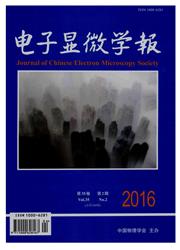

 中文摘要:
中文摘要:
通过在77K温度下进行不同变形量的低温轧制实验,研究了具有强烈单轴织构的工业纯锆板材在低温轧制变形条件下的孪生行为及变形机理。采用扫描电镜(SEM)和电子背散射衍衬(EBSD)分析和表征了变形材料的微观组织和织构。结果表明,在沿C轴加载的低应变条件下{1022}〈1123〉压缩孪生是主要的变形机制,同时在{1022}〈1123〉压缩孪晶中产生了二次孪晶({10}-2}〈10T1〉拉伸孪晶)以协调变形。施密特因子计算及孪晶分布的EBSD模拟结果表明,在低温变形条件下的孪生模式的选择是由施密特因子的数值大小决定的。探讨并解释了轧制过程中随着应变量增加由孪生所导致的织构演变。
 英文摘要:
英文摘要:
Industry pure zirconium sheets with a strong c-axis fiber texture were rolled to different strains at 77 K to investigate the twinning behavior and deformation mechanism. The microstructure and texture of the rolled specimens were characterized by scanning electron microscopy (SEM) together with electron backscatter diffraction (EBSD) techniques. The results show that the {1022} (1123) compression twinning mode is the dominant deformation twin at low strains loaded along the c-axis, and the {1012} ( 10]- 1 ) tensile twinning generates as the second twin in {1022} ( 1123 ) twins. The selection of twinning modes is governed by Schmid factor (SF) due to the calculating of SF and the EBSD simulating of twinning distribution. The evolution of texture during rolling affected by twins with increase of the strain was explained.
 同期刊论文项目
同期刊论文项目
 同项目期刊论文
同项目期刊论文
 Study of precipitate evolution and recrystallization of β-quenched Zr–Sn–Nb–Fe–Cr–Cu alloy during ag
Study of precipitate evolution and recrystallization of β-quenched Zr–Sn–Nb–Fe–Cr–Cu alloy during ag Compression deformation behavior of Zr-1Sn-0.3Nb alloy with different initial orientations at 650 de
Compression deformation behavior of Zr-1Sn-0.3Nb alloy with different initial orientations at 650 de Effect of predeformation on microstructural evolution of a Zr alloy during 550-700 degrees C aging a
Effect of predeformation on microstructural evolution of a Zr alloy during 550-700 degrees C aging a Formation and evolution of adiabatic shear bands in zirconium alloy impacted by split Hopkinson pres
Formation and evolution of adiabatic shear bands in zirconium alloy impacted by split Hopkinson pres 期刊信息
期刊信息
